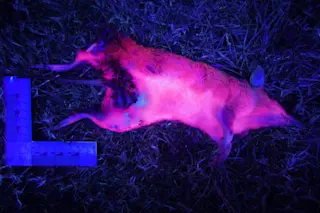A new experiment has shed light on how the monarch butterfly executes its impressive 2,000-mile migration every fall, and all it took was a lick of paint. Researchers already knew that the butterflies use
the sun to guide them to the exact same wintering spot in central Mexico. But because the sun is a moving target, changing position throughout the day, biologists have long speculated that in addition to having a “sun compass” in their brains, butterflies must use some kind of 24-hour clock to guide their migration [Wired.com].
In a new study, published in Science, researchers determined that the butterflies have a second circadian clock in their antennae, which sense light. The researchers conducted
the test by holding the butterfly wings gently and dipping their antennas in enamel paint. The ones with black paint were unable to orient to the south, they found, while butterflies whose antennas were coated ...














